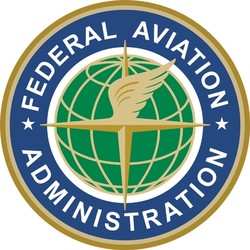Wed, Jan 06, 2016
Cautions About Embedded Runway Lights
On May 7, 2015, a Bell 206L-3 helicopter contacted the recessed centerline lights on a paved runway surface while practicing running landings causing damage to the aircraft skids. The maneuver was accomplished with Air Traffic Control (ATC) authorization and within operational standards. The centerline lighting was approved by the FAA.

In an Information For Operators (InFO), the FAA says that helicopter operators should avoid conducting running landing training in skid equipped helicopters on runways equipped with embedded in-pavement lighting systems. Where this is not possible or in the event the pilot chooses to perform a running landing due to operational safety considerations, the pilot should accomplish running landings so as to avoid contacting embedded in-pavement lighting systems on the runway.
This can be achieved by landing off-center to the side of centerline lights, landing beyond touchdown zone lights, and avoiding high speed taxiway centerline indicator lights to ensure that throughout the maneuver, the skids do not contact the embedded in-pavement lighting fixtures. Before starting the maneuver, pilots should request embedded in-pavement lights be activated and set at an intensity level sufficient to see and avoid the lights. Runways equipped with centerline lights are at least 150 feet-wide and touchdown zone lights occupy the first 3000 feet of pavement beyond the threshold or half the runway length on runways that are less than 6000 feet long.
The FAA notes that the avoidance technique should only be used if it can be accomplished and if it is not contrary to any flight manual requirements, aircraft limitations, or operations specifications. Title 14 of the Code of Federal Regulations (14 CFR) part 135 operators and pilots are also encouraged to ensure that running landings can be accomplished in accordance with approved maneuver descriptions.
The agency recommends that Directors of Operations, Directors of Training, Training Center Managers, Check Pilots, Fix-Based Operators, Pilots, and flightcrew members (flight nurse, load master, etc.), should be familiar with the content of this InFO. They should work together to ensure that the content of this InFO is incorporated into operational policy, provided to pilots during ground training, and reinforced during flight training and checks.
More News
Aero Linx: International Federation of Airworthiness (IFA) We aim to be the most internationally respected independent authority on the subject of Airworthiness. IFA uniquely combi>[...]
Ultrahigh Frequency (UHF) The frequency band between 300 and 3,000 MHz. The bank of radio frequencies used for military air/ground voice communications. In some instances this may >[...]
A Few Questions AND Answers To Help You Get MORE Out of ANN! 1) I forgot my password. How do I find it? 1) Easy... click here and give us your e-mail address--we'll send it to you >[...]
From 2019 (YouTube Edition): Learning To Paint Without Getting Any On Your Hands PPG's Aerospace Coatings Academy is a tool designed to teach everything one needs to know about all>[...]
Also: Sustainable Aircraft Test Put Aside, More Falcon 9 Ops, Wyoming ANG Rescue, Oreo Cookie Into Orbit Joby Aviation has reason to celebrate, recently completing its first full t>[...]
 ANN's Daily Aero-Linx (05.06.25)
ANN's Daily Aero-Linx (05.06.25) ANN's Daily Aero-Term (05.06.25): Ultrahigh Frequency (UHF)
ANN's Daily Aero-Term (05.06.25): Ultrahigh Frequency (UHF) ANN FAQ: Q&A 101
ANN FAQ: Q&A 101 Classic Aero-TV: Virtual Reality Painting--PPG Leverages Technology for Training
Classic Aero-TV: Virtual Reality Painting--PPG Leverages Technology for Training Airborne 05.02.25: Joby Crewed Milestone, Diamond Club, Canadian Pilot Insurance
Airborne 05.02.25: Joby Crewed Milestone, Diamond Club, Canadian Pilot Insurance



